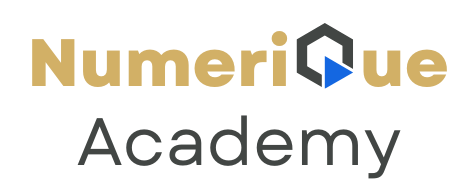As we step into 2025, many business owners still find it daunting to adopt AI tools. Learn how to choose the right AI tools for your business needs.
In today’s fast-paced digital world, artificial intelligence (AI) tools are no longer a luxury—they’re a necessity. Whether you’re running a startup or managing an enterprise, AI can help you automate tasks, gain insights from data, improve customer experience, and boost productivity. But with so many AI tools on the market, choosing the right one for your business can feel overwhelming.
Here’s a step-by-step guide to help you make the smartest choice for your specific business needs.
1. Define Your Business Goals First
Before diving into AI tools, get clear on your goals. Ask yourself:
- Do you want to automate customer service?
- Are you trying to speed up your content creation process?
- Do you need help with marketing, analytics, or product recommendations?
Your objective will shape the type of AI solution you need. For example:
- Chatbots like Tidio or Drift are great for customer support.
- Copywriting tools like Jasper AI or Copy.ai help marketers.
- Predictive analytics tools like H2O.ai are perfect for data-heavy businesses.
2. Understand the Types of AI Tools Available
AI tools vary depending on their use case. Common categories include:
- Natural Language Processing (NLP): Tools like ChatGPT or Claude for writing, summarizing, or chatting.
- Image & Video Generation: Tools like Midjourney or Runway for creative visuals and editing.
- Data Analytics & Business Intelligence: Tableau with Einstein AI, MonkeyLearn.
- Customer Support Automation: Intercom, Zendesk AI.
- Project & Workflow Automation: Zapier AI, Notion AI.
Understanding what category fits your need narrows down the list.
3. Evaluate the Features Carefully
Once you know what type of AI you need, compare features. Look for:
- Ease of Use: Is the interface beginner-friendly or technical?
- Integration: Does it work well with your current tools (like Slack, CRM, or WordPress)?
- Customization: Can you tailor the tool to your specific workflows?
- Scalability: Will it grow with your business?
- Security & Compliance: Especially if you deal with sensitive data—GDPR and other regulations matter.
4. Check for Real Use Cases & Testimonials
Always check case studies, reviews, or testimonials to see how others in your industry are using the tool. For example, a digital marketing agency might benefit from Jasper for social media copy, while an eCommerce store could use Levity to automate product tagging.
Also, check platforms like:
- G2
- Capterra
- Product Hunt
These reviews can reveal pain points or unexpected benefits that product pages might not highlight.
5. Try Before You Buy
Most reputable AI tools offer free trials or freemium plans. Use these to:
- Test out features
- See how it fits into your workflow
- Measure time or cost savings
It’s worth involving your team in this testing phase to get feedback from real users within your business.
6. Analyze ROI Potential
AI tools are an investment. Consider:
- Time saved per week/month
- Increase in output or quality
- Reduction in manual errors
- Improved customer satisfaction
A tool might seem expensive initially, but if it saves you hours or generates leads, it can quickly pay for itself.
7. Support & Updates
Tech changes fast—your AI tool needs to evolve too. Look for companies that:
- Release regular updates
- Offer strong customer support
- Have a roadmap for future features
Bonus: An active community or knowledge base is a good sign the tool is well-supported.
8. Don’t Chase Trends—Solve Problems
It’s easy to fall for shiny new tools on social media or “Top 100 AI Tools” lists. But always ask: “Does this solve a real problem for my business?”
Focus on relevance over hype. A niche AI tool that improves a small part of your workflow might deliver far more value than a popular general-purpose tool.
Conclusion
Choosing the right AI tool isn’t about finding the flashiest software—it’s about identifying what matters most to your business and matching it with the right technology. With clear goals, smart evaluation, and a little experimentation, you’ll be able to confidently pick tools that save time, cut costs, and help your business scale faster.
Ready to start your AI journey? Make a list of 3 business challenges you’re currently facing, then start matching them to tools. It’s that simple.

